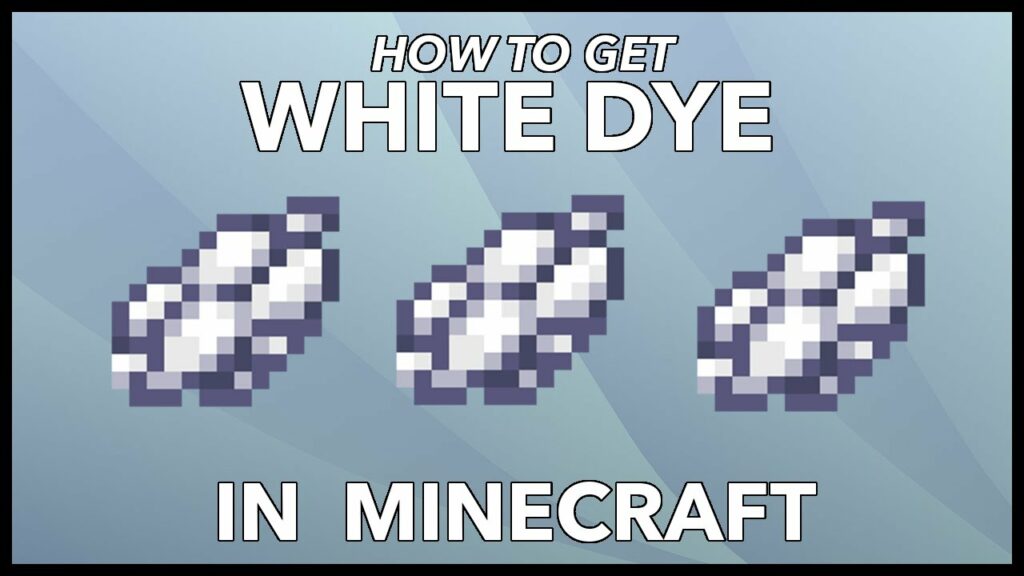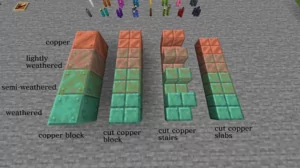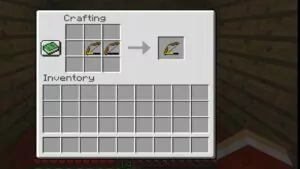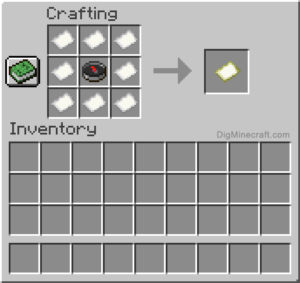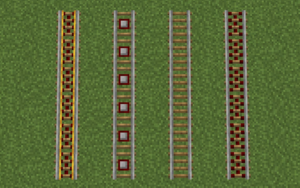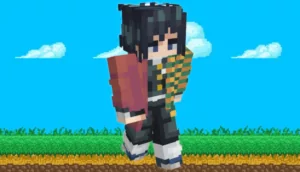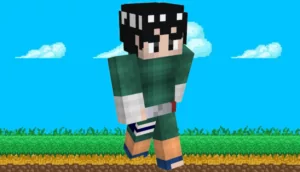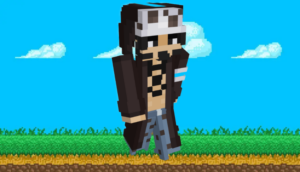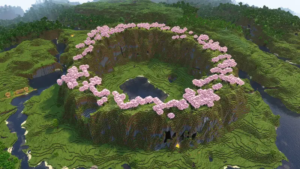The vibrant realm of Minecraft offers immense personalization, allowing players to enhance various items with a splash of color. With around sixteen distinct dyes at your disposal in Minecraft, crafting them is generally straightforward. However, creating white dye has become a tad more challenging due to newer updates.
This guide aims to demystify the production of white dye and explore its applications within Minecraft.
Introduction to Minecraft Dyes
In the vast and varied world of Minecraft, creativity knows no bounds. Beyond constructing towering structures and intricate contraptions, players also indulge in the art of coloration using dyes. These colored substances play a pivotal role in Minecraft, giving players the ability to personalize their world, making it as vibrant or as muted as they desire.
Sources of White Dye in Minecraft
While Minecraft boasts a rainbow of dyes, white dye holds its own unique place. Naturally, it can be sourced from flowers, specifically the Lily of the Valley, which can be found in various biomes. Another source of white dye is bones, obtained from skeletons, which can then be crafted into bone meal—a versatile white dye in the game.
Historically, bone meal was the sole source of white dye in the game. Derived from crafting bones or bone blocks, bone meal served not just as a white dye but also as a fertilizer, helping plants grow rapidly in the game. But as the game evolved, the dye system underwent significant modifications, distinguishing bone meal from white dye, though the former still acts as a precursor.
Another organic source of white dye in Minecraft is the lily of the valley. This flower, with its delicate white blossoms, can be found in various biomes, mainly forest biomes. When placed in the crafting grid, the lily of the valley yields white dye, providing players with an alternative to using bones. This method ensures that players who might not have immediate access to bones can still procure white dye without much hassle.
In addition to bones and lilies of the valley, wandering traders occasionally offer white dye in exchange for emeralds. These nomadic traders, with their distinct blue robes and accompanied by llamas, roam the world of Minecraft and carry a variety of items. Engaging with them gives players another potential source to stock up on white dye, especially if they have emeralds to spare.
Crafting White Dye: Step-by-Step Guide
Crafting white dye is straightforward. Initially, you’ll need to locate and gather the primary ingredient for white dye, which is the Lily of the Valley. This flower can be commonly found in forest biomes, and its distinct white blossoms make it easy to spot among the greenery. When exploring, it’s essential to keep an eye out for these blossoms, as they are your ticket to crafting the white dye.
Once you have the Lily of the Valley in your inventory, the crafting process is relatively straightforward. Head to your crafting table and place the flower in any cell of the 3×3 crafting grid. Upon doing so, you’ll notice the option to retrieve white dye will appear on the right. Simply drag the dye to your inventory, and you’ve successfully crafted white dye.
It’s worth noting that while the Lily of the Valley is the direct source for white dye, the dye can also be obtained by trading with specific villagers or exploring various chests in the world. This is particularly useful for players who might be struggling to find the flower in their surroundings. Remember, Minecraft is a game of creativity and exploration, so don’t hesitate to seek alternative methods if one path proves challenging.
Alternative Methods to Obtain White Dye
While Lily of the Valley and bones are the most common sources, wandering traders also occasionally offer white dye in exchange for emeralds. It’s always good to check their trades when they visit. Furthermore, players can also convert blue and white dyes into light blue, meaning if you have an excess of light blue dye, you can reverse-engineer it to retrieve the original white dye.
One such method involves wandering traders, who occasionally offer white dye in exchange for emeralds, providing an economic means to acquire it. Players can also make use of bone meal, sourced from bones dropped by skeletons or fish, which serves a dual purpose as both a fertilizer and as white dye in the crafting table.
Another less conventional way is to find white flowers, specifically the Lily of the Valley, which, when placed in the crafting grid, yields white dye. These flowers are typically found in various biomes, such as flower forests. Adventurous players who explore and gather resources from different environments can thus stumble upon these natural dye sources, adding an element of exploration and discovery to the dye-making process.
How to Use White Dye in Minecraft
White dye in Minecraft is multifunctional. It can be used to dye sheep, ensuring a continuous supply of white wool. Additionally, players can directly dye wool blocks, terracotta, or even glass, allowing for detailed architectural designs. Banners, too, can be adorned with intricate white patterns using this dye.
Primarily, players can use white dye to change the color of wool, terracotta, or any other dyeable block to a pristine white shade. Wool, for instance, can be directly combined with white dye in the crafting table to alter its color. Similarly, white dye can be utilized to modify the hue of a shulker box, ensuring that players can easily identify and organize their items. Additionally, white dye plays a crucial role in banner designs, enabling players to imprint patterns or symbols on banners, thereby personalizing their in-game spaces.
Beyond blocks and banners, white dye also finds its place in customizing wearable items. Armor made of leather, like helmets, chestplates, leggings, or boots, can be re-colored using white dye by simply placing both the dye and the leather armor piece in the crafting grid. This allows for an individualized touch to a player’s ensemble. Pets aren’t left out either; tamed wolves’ collars can be dyed white, signaling a unique bond between the player and their virtual companion. Whether it’s for aesthetic appeal or functional differentiation, white dye in Minecraft offers a plethora of creative opportunities for players to explore.
Storing and Managing Your Dyes
Effective storage ensures you always have dyes at your disposal. The game provides several tools, like chests, barrels, and shulker boxes, to safely store your dyes. Using a designated storage system allows players to quickly locate specific colors when needed. Labeling containers or dedicating certain storage blocks solely for dyes can be immensely helpful. Furthermore, if you’ve managed to collect a large quantity of a particular dye, consider turning them into blocks (if the dye allows for it) to optimize storage space.
Managing your dyes also extends beyond mere storage. Keeping track of your dye inventory ensures you never run out of a particular color in the middle of a project. You can achieve this by periodically checking your stock and replenishing it as required. If you’re working on a big project that requires multiple dyes, it’s a smart move to keep the necessary colors close at hand. This way, you save time and can maintain a smooth flow in your crafting or building process. Moreover, understanding dye combinations and how primary colors can create secondary ones will also enable you to maximize your dye usage and reduce waste.
Combining White Dye with Other Colors
White dye, in particular, holds a unique position in this spectrum. When combined with other colors, it offers a chance to lighten shades and create new, nuanced tints. This blending process gives rise to a broader palette, allowing players to design with more specificity and detail. By mixing white dye with primary colors, one can achieve softer hues, while its addition to already mixed dyes can further enhance or adjust the resultant shade.
Moreover, the process of combining white dye is more than just a simple mixing activity. It’s an exercise in understanding color theory within the confines of the game. Players can experiment, understanding how much white dye to add to achieve the perfect pastel or to slightly lighten a bold color, turning their Minecraft projects into lessons in artistry. This capability, to merge and tweak colors, ensures that players can more closely match their in-game creations to the visions in their imaginations.
Tips and Tricks for Creating Dyes
When hunting for dye sources, it’s always good to carry shears. This ensures flowers are harvested without being destroyed. Another tip is to cultivate a dye garden. Plant a collection of dye-producing flora, ensuring a sustainable supply. For those who lean heavily on bone meal, consider constructing a mob farm. This way, skeletons can be harvested en masse for their bones.
One of the first things seasoned players realize is that dyes aren’t just about directly sourcing colors; sometimes, blending two different dyes can lead to new, vibrant hues that can’t be found naturally in the world. Additionally, certain biomes or environments are richer in specific resources, making them hotspots for dye production. Venturing out into these terrains can be beneficial. For instance, flower forests are treasure troves, teeming with a variety of flowers that can be converted to dyes. But remember, each dye has its unique recipe and some might require a tad more effort than others.
Another handy tip is to always have a well-organized inventory. When you’re on a dye-collecting mission, ensure you’ve sufficient space to store different ingredients, as trekking back and forth can become cumbersome. Also, don’t shy away from experimenting. Sometimes, you might discover unexpected color combinations or ways to optimize your dye yields. Looting villages can sometimes give you rare flowers or plants that can be used as dye sources. Moreover, using bone meal on grass blocks can generate flowers and tall grass, offering an easy way to quickly harvest dye components. With patience and creativity, the world of Minecraft dyes can truly come alive in your hands.
Conclusion
Minecraft’s dye system is a testament to the game’s dedication to creativity and personal expression. White dye, with its versatility and accessibility, epitomizes this design philosophy. Whether you’re an architect looking for the perfect shade of glass for your cathedral or a shepherd seeking to dye your sheep, white dye is an indispensable tool in the Minecraft universe.
